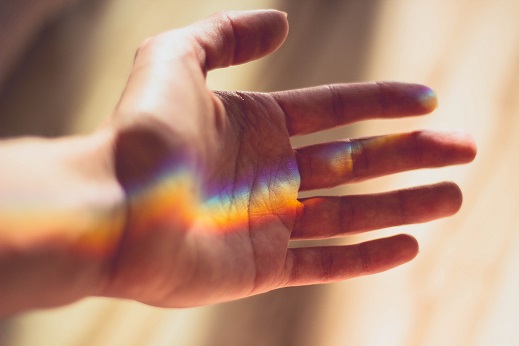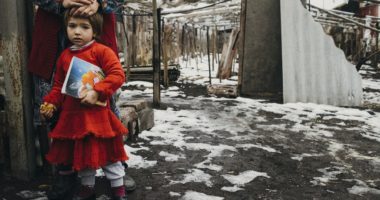In 2018, 33-year-old Roxsana Hernandez, a transgender woman from Honduras, died while in the custody of the United States’ Immigration and Customs Enforcement (ICE) in Albuquerque, New Mexico. Like many other transgender women from Central and South America, Roxsana had claimed asylum in the United States, hoping for a better life. She had experienced harassment, violence, and discrimination in her home country, and feared further persecution because of her gender identity.
Advocates say that Roxsana didn’t receive adequate medical care during her time in custody. Indeed, according to the institutional review of the events leading up to Roxsana’s death, she was moved from detention facility to detention facility, despite being visibly unwell. Her prescription medications and medical records were apparently lost. Her condition was assessed and documented as poor on multiple occasions before she was able to access the appropriate level of care. She died of complications related to HIV two weeks after arriving in the United States – the country in which she had sought a safe haven.
The dangers facing transgender people
In many places, transgender people are disproportionately vulnerable to the same kinds of harms that Roxsana faced in Honduras. They can be sidelined by societal and cultural stigma, which is often codified in hostile legal regimes. They are frequently discriminated against and denied access to services related to housing, education, employment and healthcare. Violence, including sexual violence, against transgender people is common, and it is believed that transgender women are more than 49 times more likely to contract HIV than the general population. Despite being disproportionately affected by health concerns like mental health challenges, violence, and illnesses like HIV, transgender people have low rates of access to health services, often due to fear and stigma.
Many of the vulnerabilities experienced by transgender people and other people belonging to sexual minority groups are exacerbated during humanitarian crises, including during conflicts, so-called ‘natural’ disasters and mass migration. There are countless examples of this: transgender people were subjected to police brutality near the end of Nepal’s civil war; lesbian, gay, bisexual and transgender (LGBT) people were brutalized in Iraq under ISIL, both by the latter as well as by government forces and other militias. Echoes of the violence suffered by LGBT people during Peru’s armed conflict resound to this day. Making matters worse, in such crises, social safety networks that provide security, housing and livelihoods for people of non-conforming gender or sexual identities may break down. LGBT people have even been blamed for bringing about disasters like floods and earthquakes, making them scapegoats in the eyes of many and increasing their exposure to violence.
Unfortunately, a person’s gender identity can also lead to their exclusion from life-sustaining assistance in emergencies. This appears to be especially true when rigid systems based on normative understandings of gender are used to decide who is entitled to protection and aid. In the aftermath of the Indian Ocean tsunami in 2004, for example, transgender women in parts of India were denied access to temporary shelters because their appearance didn’t correspond with the gender shown on their identification documents. History repeated itself following Hurricane Katrina, when some transgender women were barred access to temporary lodgings in the southern United States. Similar instances of transgender people being denied assistance for not having ‘acceptable’ identification documents, not having ‘acceptable’ living arrangements (for example, in a household with children) or simply not expressing an ‘acceptable’ gender identity have been reported in post-disaster contexts as diverse as Haiti, Nepal and Pakistan.
Quite simply, transgender people have been excluded from humanitarian assistance – which is intended to benefit the most vulnerable – because of the very characteristic that renders them vulnerable in the first place. What could be behind this failure of humanitarian organizations to meet their principal objective: to provide help to those who need it most?
The needs of transgender people overlooked
Many decision-makers within humanitarian organizations seem to be operating on the belief that transgender people constitute a number too small to merit attention. There are perhaps two reasons for this. First, little data is collected on transgender populations, in humanitarian contexts and others. This makes it difficult, if not impossible, to know how many transgender and other people belonging to sexual minority groups have been adversely affected in humanitarian crises, either by external forces or by the exclusionary policies of the humanitarian programs themselves.
Second, and crucially, invisibility can be a deliberate strategy employed by transgender people as a means to achieve and maintain safety in societies where they are marginalized. This complicates multiple facets of aid provision, from data collection to creating appropriate programming. How can one count a population that would prefer not to be counted? How can a service ‘target’ beneficiaries who, because of the experience of being targeted in other, more nefarious ways, wish to stay out of view?
Clearly, a more thoughtful approach to gender is needed in order to meet the humanitarian objective of serving those who are the most in need. Such an approach would recognize and validate the experiences of transgender people and other people belonging to sexual and gender minority groups; offer them the option of sharing their true identities with personnel; and ensure that their dignity and right to privacy would be respected, should they choose to do so.
Meeting the needs of LGBTI communities in crisis
Recent efforts within the sector suggests that there has been some recognition of this. For example, the UN Refugee Agency (UNHCR) has updated its policies and issued detailed guidance with a view to ensuring that the rights of lesbian, gay, bisexual, transgender or intersex (LGBTI) persons of concern are protected. The International Organization for Migration has launched a training program on related issues for staff who may work with LGBTI persons in humanitarian crises or situations of forced displacement. The Inter-Agency Standing Committee (IASC) has worked considerations specific to LGBTI persons into its guidelines on gender-based violence. It remains to be seen how these guidelines, policies and frameworks translate into action and outcomes – but they’re a start.
The unique needs of transgender people in crises have been something of a blind spot for humanitarian organizations. This may be due in part to a lack of available information on these populations, coupled with the fact that invisibility can be a deliberate survival strategy for marginalized groups, including those who fall outside of the gender binary.
Few are as marginalized as transgender people can be, as illustrated by the tragic death of Roxsana Hernandez in the very place where she’d sought refuge from her aggressors. For humanitarian organizations to fulfil their aims of protecting the most vulnerable, their programs and personnel must be equipped to provide appropriate care to gender and sexual minority groups, whenever they come forward to request it.
In the meantime, ‘out of sight’ must not equate to ‘out of mind’.
See also
- Elizabeth McGuiness & Saman Rejali, Beyond binaries: An intersectional approach to humanitarian action, October 8, 2019
- Ricardo Fal-Dutra Santos, Challenging patriarchy: gender equality and humanitarian principles, July 18, 2019
- Adelicia Fairbanks, How identity affects the internal threats aid workers face, October 18, 2018






Thank you for this excellent – and necessary – analysis and presentation. You say, in general terms:
“Yet they have been excluded from humanitarian assistance because of their identities …” and
“Quite simply, transgender people have been excluded from humanitarian assistance …”
Is that true for the ICRC as well? – As a delegate I visited prisons in Israel and occupied territories (1970/1971). I was not aware of the problem, and in our conversation we never asked the relevant question. Were we naive? or even guilty of negligence? – In my view it was not an issue at that time. Why is it now?
Dear Hans, thank you very much for this feedback and these important questions. I would like to put your question out there to other ICRC colleagues: can you share examples from your own experience when transgender people have been excluded? Even better, when they have been successfully included?
A the time when millions of people are fighting for their life and probably more to come, war victims are left to their own devices, Africans are bracing for impact, humanitarian action is almost grinding to an halt, ICRC is posting a long advocacy piece on the protection of … transgender persons who represent an infinitesimal part of victims of conflicts and other emergencies. just ridiculous.
I’m not sure who is out of her/his/its mind . The author or the ones who have decided to post this text but I strongly suggest to get out of their western intellectual bubble, open the window and look at the world around them.
Covid 19 is more than enough, we don’t need that sort of humanitarian oligophrenia. Go back to work please !
Dear Pascal,
We apologize that you found this blog upsetting; indeed, these are unsettling times. Rest assured that every single colleague at ICRC is working around the clock to pinpoint our most impactful roles in the current pandemic.
At the same time, even against this backdrop of unprecedented global chaos, we believe that life – and threats to life – goes on outside the pandemic. We are striving to bring coverage of the pandemic where relevant, such as our blog released today on COVID-19 and cyber attacks on hospitals, but we will also continue to shape the debate on reducing human suffering in armed conflict beyond the coronavirus. This means shedding light on the situation of the most vulnerable people caught in armed conflict, even the “infinitesimal” ones such as the transgender population.
The ICRC has always worked to highlight the plight of all those affected by armed conflict and violence, including those less visible. The international transgender day of visibility merits our attention, and so do transgender people who are likely to once more count among the invisible victims of COVID-19.
Kind regards,
Lizzie
Hi Sandra and Lizzie, thank you for this article that makes unnecessary suffering visible, while it still may be invisible for so many. Being transgender is a reality that impacts everyday situations over a life time. The fact that for many people it remains invisible doesn’t reduce its importance, even in times of covid-19. It is precisely now that people with reduced power and invisibility will be more impacted than others. We already see that happening as we speak.
We are witnessing a fundamental on-going social shift where people across the world claim greater recognition for their multiple identities. In response to this evolution, we must understand how existing social dynamics will exacerbate suffering already before the crisis. My impression is that if we want to remain relevant as international humanitarian actors in the future, we better get this right, notably through partnerships with diverse networks and local actors.
We all come from systems with unspoken values and existing power structures. As humanitarian workers look at the world through our own glasses, we never have the whole picture. We need to make sure that ‘my reading’ doesn’t become ‘the reading’ of a situation and that we truly leverage the diversity in a given culture. Appreciating our own bias and limitations is the start of seeing the world through different lenses, to get a richer, more accurate picture of what’s really going on.
Thank you for this excellent article. It is so important that we question whether our own biases – conscious or unconscious – or blind-spots are obstructing our commitment to a people-centered approach, to leave no-one behind, to reach the most at-risk, and to the principle of impartiality.
I’m troubled by M. Daudin’s comments above. In my opinion, the references to ‘her/his/its’ and ‘oligophrenia’ – a disease that impairs a person’s ability to think – are offensive.
M. Daudin alludes to competing attentions to the COVID-19 pandemic and transgender people. It makes me wonder his position on similarly negative narratives in the context of the pandemic about the triage of treatment for older people, persons with disabilities and people with underlying health conditions.
In different regions of the world, there are many minority groups who identify as other than male or female. Many hold important roles in society, including senior positions in government. More often than not, however, transgender people experience social marginalization and violence throughout their lives.
As humanitarians, our commitment is to a people-centered approach, not a some people-centered approach; to leaving no-one behind, not leaving some people behind; and to the principle of impartiality, not partial impartiality. We really must inform ourselves of the experiences of all diverse people affected by conflict and other crises if we are to implement inclusive assistance and protection programming. This is an important reminder.